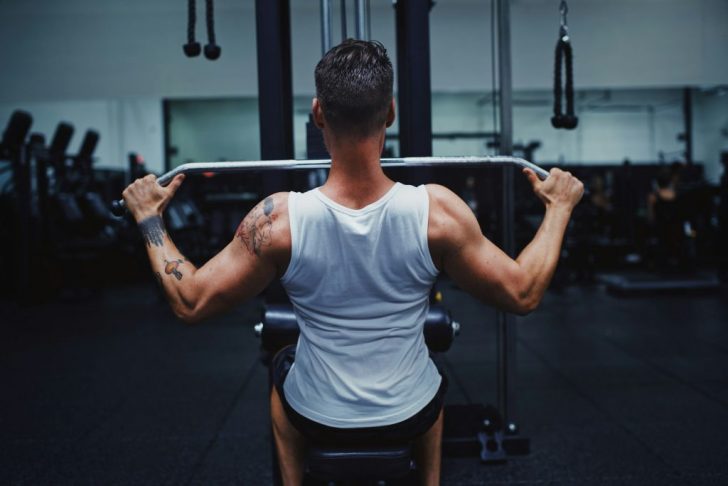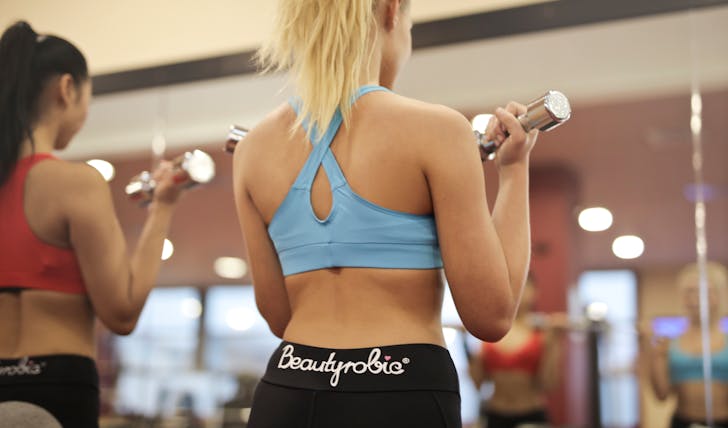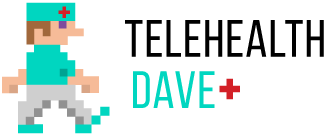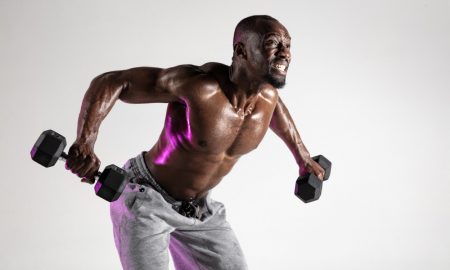
Looking to Build A Stronger Sculpted Back? Try Cable Back Workouts

Back workouts using cables, or cable back workouts as they are commonly known, have become the gold standard for anyone aiming to enhance their muscular endurance and achieve that chiseled back. These exercises provide constant tension throughout the movement, which is crucial for muscle building.
Unlike free weights, cables offer a unique resistance that can be adjusted to suit your specific training needs. Thus, this makes them a versatile option for beginners and seasoned gym-goers alike.

Cowie / Unsplash / Here’s all you need to know about back workouts using cables (cable back workouts.)
What are Back Workouts Using Cables All About?
Before we jump into the exercises, understanding the anatomy of your back can significantly enhance your workout effectiveness. Your back is comprised of several key muscle groups, including:
- Latissimus dorsi (lats:) These are the largest muscles of the back and give it a wide, tapered appearance.
- Trapezius (traps:) Located from your neck to the middle of your back, these muscles are involved in shrugging and neck movements.
- Rhomboids and Erector Spinae: These muscles lie beneath the traps and help in maintaining good posture.

Olly / Pexels / Cable back workouts target essential back muscles like lats, traps, and rhomboids.
Targeting these muscles through specific back workouts using cables ensures a comprehensive approach to back strength.
Essential Cable Back Workouts for Maximum Impact
A staple in back workouts using cables, the cable row focuses on the mid-back muscles. This exercise helps in improving posture by strengthening the rhomboids and lats.
To perform a cable row:
- Sit on the machine with your knees slightly bent.
- Grab the cable attachment with both hands.
- Pull the cable towards your waist while keeping your back straight and elbows close to your body.
- Slowly return to the starting position.
Lat Pulldown
The lat pulldown is particularly effective for targeting the latissimus dorsi, enhancing the width of your back. Here is how to do it:
- Sit down at a lat pulldown machine and secure your thighs under the pads.
- Grasp the bar with a wide grip.
- Pull the bar down towards your chest, squeezing your shoulder blades together at the bottom.
- Release the bar back up with control.
Straight Arm Pulldown
This exercise is excellent for isolating the lats without the biceps becoming too involved.

Mr. Alpha / Pexels / Straight arm pulldown is an essential cable back workout that helps isolate the lats.
To execute a straight-arm pulldown:
- Stand in front of a cable machine and hold the bar with an overhand grip.
- With your arms fully extended, pull the bar down to thigh level while keeping your back straight.
Slowly let the bar return to the starting position.
Cable Reverse Fly
For those looking to enhance their upper back and shoulders, the cable reverse fly is indispensable. It targets the rear deltoids and traps. Perform it by:
- Stand in the center of a cable crossover station.
- Cross your arms to grab the opposite handles.
- With a slight bend in your elbows, pull your arms back and out to your sides.
- Slowly return to the starting position.
How to Integrate Cable Back Workouts into Your Routine?
Incorporating these back workouts using cables into your routine can be done two to three times a week, depending on your overall fitness plan. It is essential to start with lighter weights to master the form and gradually increase the resistance as you become more comfortable with the movements.
Thus, back workouts using cables – Cable Back Workouts – are an excellent way to build strength and aesthetics in your back muscles. They allow for a range of exercises that can be tailored to your fitness level and goals. By consistently incorporating cable back workouts into your routine, you are not just working towards a more sculpted back. Rather, you are also improving your overall posture and strength. Remember, consistency is key, and with the right approach, your back will not only perform better but also look the part.
More in Fitness
-
`
Hair & Makeup Designer Sarah Rubano Talks Turning Mia Goth Into Pearl
Transforming an actor into an unrecognizable character is no small feat, and Mia Goth’s Pearl makeup in the hit movie “Pearl”...
December 17, 2024 -
`
The Physical Signs of Hunger and How Mindful Eating Makes a Difference
Hunger is one of the most basic yet essential signals our body uses to communicate its need for energy. However, many...
December 15, 2024 -
`
Why Did Chris Pratt Call Anna Faris Before Proposing to Katherine?
Chris Pratt, the beloved star of “Guardians of the Galaxy,” made headlines when he revealed that he called his ex-wife, Anna...
December 3, 2024 -
`
6 Proven Tips to Tackle Insurance Claim Denials Successfully
Claim denials are a common hurdle for healthcare providers and professionals, even for those who follow the necessary procedures to avoid...
December 1, 2024 -
`
5 ‘Bad’ Fitness TikTok Trends You Shouldn’t Follow
TikTok has become a haven for creative fitness advice. But not all trends are worth your time or your health. From...
November 23, 2024 -
`
Does Drinking Water Affect Adrenal Hormones?
Drinking water is often seen as a simple way to stay hydrated, but it has deeper effects on our body than...
November 14, 2024 -
`
Why We Feel the Loss of Celebrities So Deeply?
Celebrity grief might sound strange at first. After all, most of us have never met these famous figures in person, yet...
November 5, 2024 -
`
Are High Deductible Insurance Plans as Ideal as They Appear to Be?
High deductible insurance plans have been a hot topic for years, especially as healthcare costs continue to rise. For many Americans,...
October 31, 2024 -
`
How Training Load Data Can Transform Your Exercise Routine
Tracking progress during workouts is challenging. Simple metrics like mileage or time don’t show the whole picture. Understanding the overall effort...
October 26, 2024















You must be logged in to post a comment Login